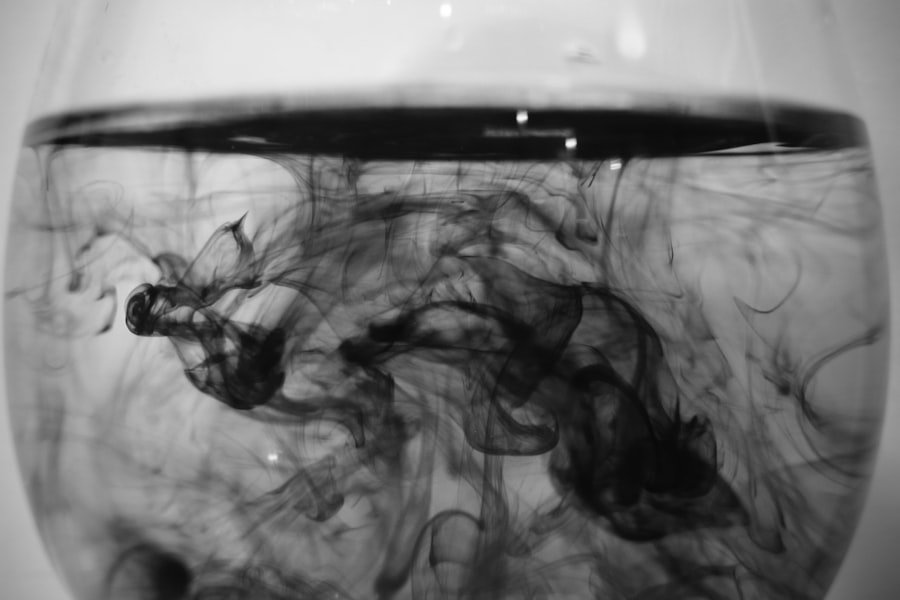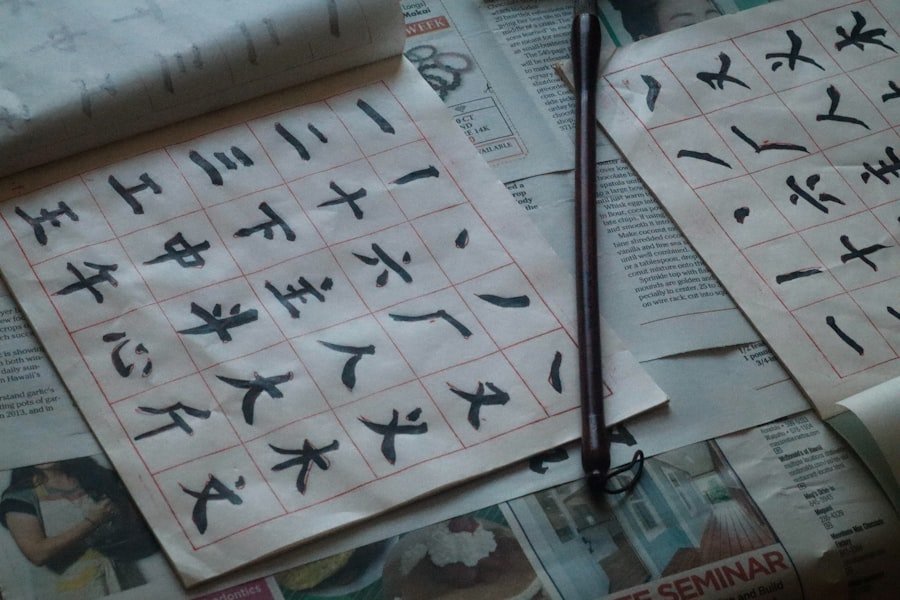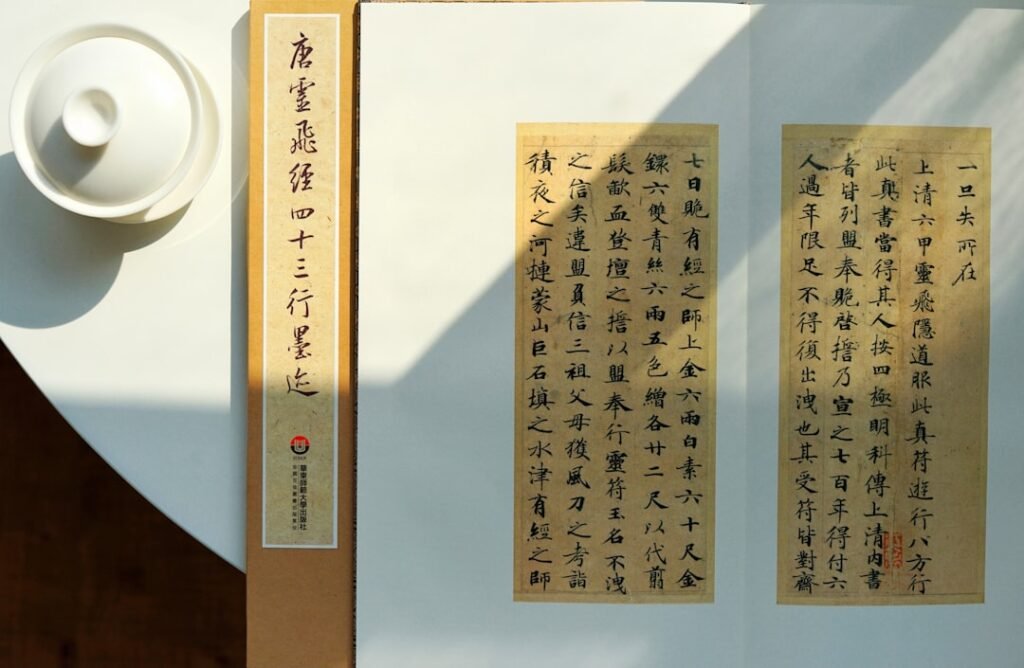Small Standard Script, known as “Xiao Kai” in Chinese, has a rich history that dates back to the Tang Dynasty (618-907 AD). This script emerged as a refined form of the earlier Regular Script, which was widely used for official documents and inscriptions. The evolution of Small Standard Script was largely influenced by the need for a more elegant and legible form of writing that could be used in both formal and informal contexts.
As the Tang Dynasty was a period of cultural flourishing, the development of this script reflects the artistic and intellectual advancements of the time. The significance of Small Standard Script extends beyond its aesthetic appeal; it serves as a bridge connecting ancient Chinese literature with contemporary society. This script has been employed in various forms of literature, poetry, and calligraphy, making it an essential component of Chinese cultural heritage.
Its widespread use in classical texts has allowed it to endure through centuries, preserving the beauty and intricacy of the Chinese language. As such, Small Standard Script is not merely a writing style; it embodies the historical narrative of China and its enduring legacy. Master the art of Chinese calligraphy. Enroll now at the LC Chinese School in Oslo.
Table of Contents
ToggleSummary
- Small Standard Script, also known as Xiaozhuan, is an ancient form of Chinese calligraphy with a rich historical and cultural significance.
- Understanding the characteristics of Small Standard Script is essential for mastering this unique style of calligraphy, including its square and angular shapes.
- Precision is of utmost importance in Small Standard Script, as it requires careful attention to detail and accuracy in every stroke.
- The tools and materials needed for Small Standard Script calligraphy include special brushes, ink, paper, and a smooth writing surface.
- Mastering the strokes and techniques of Small Standard Script requires dedicated practice and a deep understanding of its traditional methods.
- Small Standard Script has played a significant role in the Chinese calligraphy tradition, influencing other styles and serving as a foundation for artistic expression.
- Small Standard Script reflects Chinese cultural values such as discipline, patience, and respect for tradition, making it a revered art form in Chinese society.
- Practising Small Standard Script calligraphy presents both challenges and rewards, requiring perseverance and dedication to achieve mastery.
- Small Standard Script calligraphy can serve as a form of meditation and mindfulness, promoting focus and tranquillity through its rhythmic and deliberate movements.
- The influence of Small Standard Script on modern calligraphy and art can be seen in its continued relevance and inspiration for contemporary artists and designers.
- Beginners can start practising Small Standard Script calligraphy by studying its basic principles, practicing simple strokes, and seeking guidance from experienced calligraphers.
Understanding the Characteristics of Small Standard Script
Small Standard Script is characterised by its compactness and clarity, making it distinct from other calligraphic styles. The strokes are generally shorter and more rounded, which contributes to its legibility. Unlike the more elaborate forms of calligraphy, such as cursive or seal script, Small Standard Script prioritises simplicity and precision.
This makes it an ideal choice for both beginners and seasoned calligraphers who wish to convey their messages clearly. Another defining feature of Small Standard Script is its balanced structure. Each character is composed with careful attention to proportion and spacing, ensuring that the overall appearance is harmonious.
This balance not only enhances readability but also reflects the aesthetic principles that underpin traditional Chinese art. The script’s ability to convey meaning while maintaining visual appeal is a testament to its enduring popularity among calligraphers and scholars alike.
The Importance of Precision in Small Standard Script

Precision is paramount in Small Standard Script, as it directly impacts the clarity and effectiveness of the written word. Each stroke must be executed with care, as even the slightest deviation can alter the character’s meaning or aesthetic quality. This emphasis on precision requires calligraphers to develop a keen eye for detail and a steady hand, making practice essential for mastery.
Moreover, precision in Small Standard Script is not merely a technical requirement; it also reflects the calligrapher’s dedication to their craft. The act of writing becomes a form of self-expression, where each stroke embodies the artist’s emotions and intentions. As such, the pursuit of precision transforms calligraphy into a meditative practice, allowing individuals to connect with their inner selves while honing their skills.
The Tools and Materials Needed for Small Standard Script Calligraphy
To embark on the journey of mastering Small Standard Script, one must be equipped with the appropriate tools and materials. Traditional Chinese calligraphy requires a brush, ink, paper, and an ink stone. The brush is perhaps the most crucial tool, as its flexibility allows for a range of stroke styles and thicknesses.
Calligraphers often choose brushes made from animal hair, such as goat or wolf hair, which provide the necessary control and fluidity. Ink is another vital component, typically made from soot mixed with water. While pre-made ink can be purchased, many calligraphers prefer to grind their own ink using an ink stick and stone, as this process allows for greater control over the ink’s consistency.
The choice of paper also plays a significant role in achieving the desired effect; rice paper or Xuan paper is often favoured for its absorbency and texture. Together, these tools create a harmonious environment for practising Small Standard Script.
Mastering the Strokes and Techniques of Small Standard Script
Mastering Small Standard Script involves understanding the fundamental strokes that form each character. There are eight basic strokes in Chinese calligraphy, including horizontal, vertical, and diagonal lines, as well as dots and hooks. Each stroke has its own unique characteristics and requires specific techniques to execute effectively.
For instance, the horizontal stroke should be drawn with a gentle flick at the end to create a sense of movement. Practising these strokes in isolation is essential for developing muscle memory and control. Calligraphers often begin by repeating each stroke multiple times before attempting to form complete characters.
This methodical approach allows them to focus on their technique without being overwhelmed by the complexity of individual characters. Over time, as confidence grows, calligraphers can experiment with combining strokes to create more intricate designs.
The Role of Small Standard Script in Chinese Calligraphy Tradition

Small Standard Script occupies a significant place within the broader context of Chinese calligraphy tradition. It serves as a bridge between ancient scripts and modern writing styles, embodying both historical significance and contemporary relevance. As one of the most widely taught scripts in calligraphy classes, it provides a foundation for understanding other styles such as Regular Script and Cursive Script.
Moreover, Small Standard Script has been instrumental in preserving Chinese literature and philosophy throughout history. Many classical texts have been transcribed in this script, ensuring that they remain accessible to future generations. Its continued use in educational settings further solidifies its role as a vital component of Chinese cultural identity.
Small Standard Script as a Reflection of Chinese Cultural Values
The practice of Small Standard Script is deeply intertwined with Chinese cultural values such as discipline, patience, and respect for tradition. Calligraphy is often viewed as a reflection of one’s character; thus, mastering this art form requires dedication and perseverance. The meticulous nature of Small Standard Script encourages practitioners to cultivate these virtues while engaging with their cultural heritage.
Furthermore, Small Standard Script embodies the concept of harmony that permeates Chinese philosophy. The balance between form and function in this script mirrors the broader principles found in traditional Chinese art and aesthetics. By embracing these values through calligraphy, individuals not only connect with their cultural roots but also foster a sense of inner peace and mindfulness.
The Challenges and Rewards of Practising Small Standard Script
While practising Small Standard Script can be immensely rewarding, it is not without its challenges. Beginners may find themselves frustrated by their initial attempts to replicate characters accurately or achieve the desired fluidity in their strokes. This struggle can lead to discouragement; however, it is essential to remember that mastery takes time and persistence.
The rewards of practising Small Standard Script far outweigh these challenges. As individuals progress in their skills, they often experience a profound sense of accomplishment and satisfaction. The ability to create beautiful characters that convey meaning fosters a deeper appreciation for language and art.
Additionally, many practitioners find that engaging with calligraphy serves as a therapeutic outlet, providing an opportunity for self-reflection and personal growth.
Small Standard Script Calligraphy as a Form of Meditation and Mindfulness
Engaging in Small Standard Script calligraphy can be likened to a form of meditation or mindfulness practice. The repetitive nature of stroke execution encourages individuals to focus on the present moment, allowing thoughts to settle while cultivating a sense of calmness. As practitioners immerse themselves in the rhythm of writing, they often find that their minds become clearer and more centred.
This meditative aspect of calligraphy extends beyond mere relaxation; it fosters a deeper connection between mind and body. The physical act of holding the brush and guiding it across paper requires concentration and intention, creating a holistic experience that nurtures both creativity and self-awareness. In this way, Small Standard Script becomes not just an art form but also a pathway to personal insight.
The Influence of Small Standard Script on Modern Calligraphy and Art
In recent years, Small Standard Script has gained renewed interest among contemporary artists and calligraphers seeking to blend traditional techniques with modern aesthetics. Its clean lines and elegant forms have inspired innovative interpretations across various artistic mediums, from graphic design to installation art. This fusion of old and new highlights the versatility of Small Standard Script while ensuring its relevance in today’s artistic landscape.
Moreover, many modern calligraphers are experimenting with colour, texture, and composition while maintaining the integrity of Small Standard Script’s fundamental principles. This exploration has led to exciting new forms that challenge conventional notions of calligraphy while honouring its rich heritage. As such, Small Standard Script continues to evolve, influencing contemporary art movements while remaining rooted in tradition.
Tips for Beginners to Start Practising Small Standard Script Calligraphy
For those eager to embark on their journey into Small Standard Script calligraphy, several tips can facilitate a smoother learning experience. Firstly, investing in quality tools is essential; a good brush will significantly impact one’s ability to control strokes effectively. Beginners should also consider starting with practice paper designed specifically for calligraphy to prevent ink bleed-through.
Establishing a consistent practice routine is equally important; dedicating time each day or week to focus on stroke exercises will yield noticeable improvements over time. Additionally, studying examples from master calligraphers can provide valuable insights into technique and style. Joining a local class or community group can also offer support and encouragement from fellow enthusiasts.
In Oslo, aspiring calligraphers can take advantage of specialised courses offered at LC Chinese School. These classes focus on teaching Small Standard Script through structured lessons that cater to all skill levels. With experienced instructors guiding students through each step of the process, participants can develop their skills in a supportive environment while immersing themselves in Chinese culture.
In conclusion, Small Standard Script is not merely an art form but a profound expression of Chinese culture that encapsulates history, values, and aesthetics. Its significance within the realm of calligraphy continues to resonate today as practitioners explore its depths through practice and creativity. Whether approached as a meditative exercise or an artistic pursuit, mastering Small Standard Script offers individuals an opportunity to connect with their heritage while fostering personal growth through discipline and dedication.
Master the art of Chinese calligraphy. Enroll now at the LC Chinese School in Oslo.







